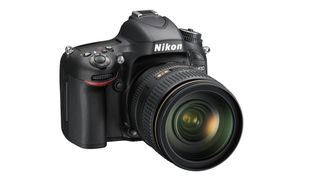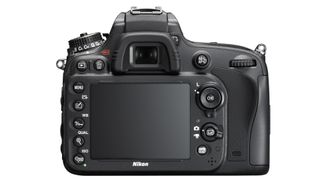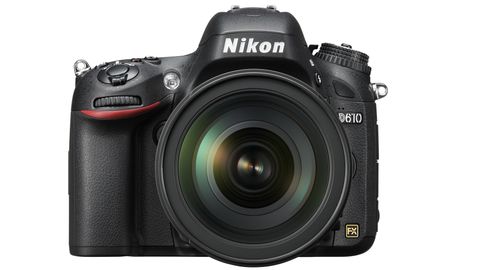Why you can trust TechRadar
The Nikon D600 is a great performer and the Nikon D610 is no different. Not surprisingly, given that it has the same processor and (we think) the same 24.MP sensor as the D600, it produces very similar images to the camera it replaces. On the whole images are well exposed and the colours are good.
Noise is well controlled, and when viewed at 100% on a computer screen there's little speckling visible in images taken at ISO 3200. Even with shots taken at the highest sensitivity setting, ISO 25600, the chroma noise isn't excessive and the luminance noise isn't intrusive. However, it's wise to reserve the high expansion settings for emergencies when you're happy to keep any prints below A4 in size.
Although high sensitivity images are softer than low sensitivity shots, detail is generally maintained pretty well and there's no obvious smearing to hide noise. Comparing our sensitivity range images shot in the lab using the D610 with those from the D600 reveals that the high sensitivity raw files (after conversion to TIFF) look a little sharper than those from the D600. There's also a bit more noise visible, but the details look better on screen at 100%.

Nikon claims to have improved the automatic white balance system's performance in artificial light, and while it's difficult to prove this conclusively (because even very small changes to the framing and AF point location can make a significant difference), we think it's better than before.
The images we shot in artificial light when using the Auto 1 automatic white balance setting (Auto 1 is the standard option while Auto 2 is designed to retain warmth) look natural and not overly corrected or neutral. They have an atmospheric warmth which matches our view of the scene fairly well.
We also found that the automatic white balance system works well in shady and overcast conditions, but the camera screen often indicated that the results looked too cold. Consequently, when shooting in a woodland on a cloudy day, we switched to the Daylight white balance setting as this produced images that looked good on the camera screen. However, when we checked the images on the computer we found the AWB (Auto 1) images were better than those shot with the Daylight white balance setting with the latter looking a little too warm.
Of course getting the white balance setting correct in-camera is less important if you shoot raw files, but most of us want good-looking images straight from the camera. In most cases we'd say that the automatic white balance system can be relied upon, but if you're unsure it's worth setting a custom white balance value.
This is done by pressing the WB button the back of the camera and scrolling with the dial above the thumbrest until PRE is displayed in the top LCD screen. It's possible to save up to four custom settings (d1-d4), so select which one you want to create using the front control dial. Then, press and hold the WB button until PRE flashes and photograph a white or neutral grey card in the same light as your subject.
Nikon has a good record with autofocus systems and the D610's is every bit as we'd expect (and exactly the same as the D600's). The subject is acquired quickly and accurately in a range of conditions - even low light that would trouble lesser systems.

It also does an excellent job of tracking moving objects and the 3D-tracking mode is a good choice when the subject's colour contrasts well with the surroundings.
One downside of the D610's AF system, however, is that the 39 points are grouped fairly tightly around the center of the image frame. This means that when shooting landscape format images, you can't set an AF point that is exactly on the intersection of thirds and subjects towards the edges of the frame are beyond reach. Consequently you have to use the 'focus-and-recompose' technique more often than you might expect with a camera that has 39 AF points, and certainly more often than you may be used to if you're stepping up from a DX (APS-C) format camera like the Nikon D7100.
We found the D610's Matrix metering system very good. As you might imagine it's not 100% foolproof (it may be necessary to use the exposure compensation control every now and then), but it didn't throw up any surprises during our test. It behaved consistently, and didn't regularly underexpose under cloudy skies like the D7100 is prone to do.
You might also like...

What camera should I buy? Your options explained
Standard Quiet mode enables you to take a single shot but hold the mirror up as long as your finger is on the shutter release so you can let it fall later (by lifting your finger) to reduce the amount of noise at the time of taking the shot. Quiet Continuous reduces the maximum frame rate to 3fps and apart from that, it doesn't have a dramatic impact. It seems unlikely, if you're photographing nervous wildlife, that switching to Continuous Quiet mode will make a dramatic difference: animals will probably be just as spooked as when the normal mode is used.
One of the key questions that needs to be answered about the D610 is whether it suffers from the same problem of dirt being generated from inside the camera and depositing itself on the sensor. To address this we shot over 4000 images on each of two cameras and checked several images throughout the sequences for dirt marks. Happily, both sensors showed no sign of any problems… so a natural conclusion is that the new shutter mechanism in the D610 is to the resolve the problems of the D600's.

I'm off to France this summer, and this app could make me très fluent

Intel unveils flurry of new Arc GPUs — however serious graphics users will have to wait for more powerful models, as these focus on a completely different and more lucrative market

We just got another hint that the Samsung Galaxy Watch 7 is almost here
